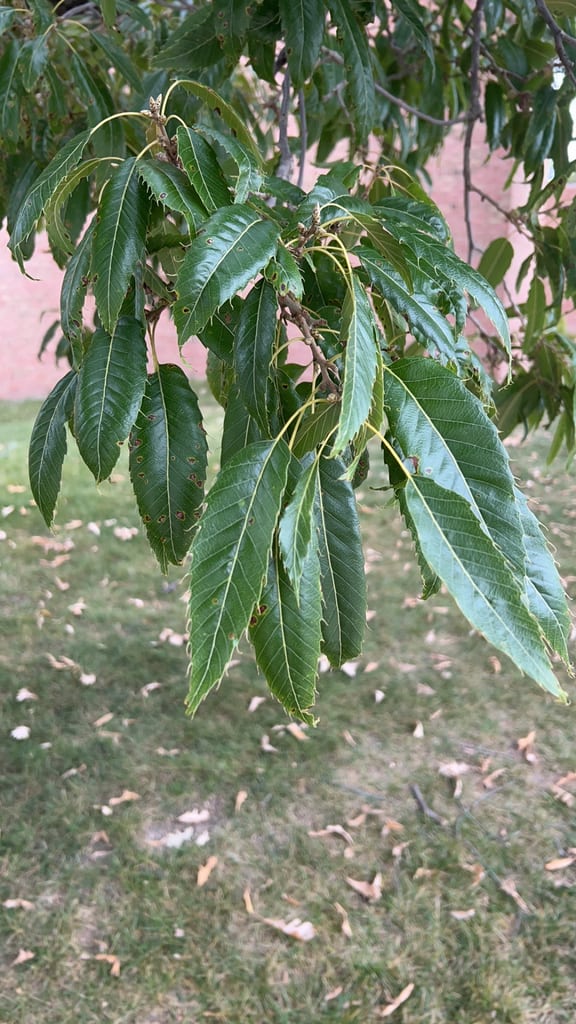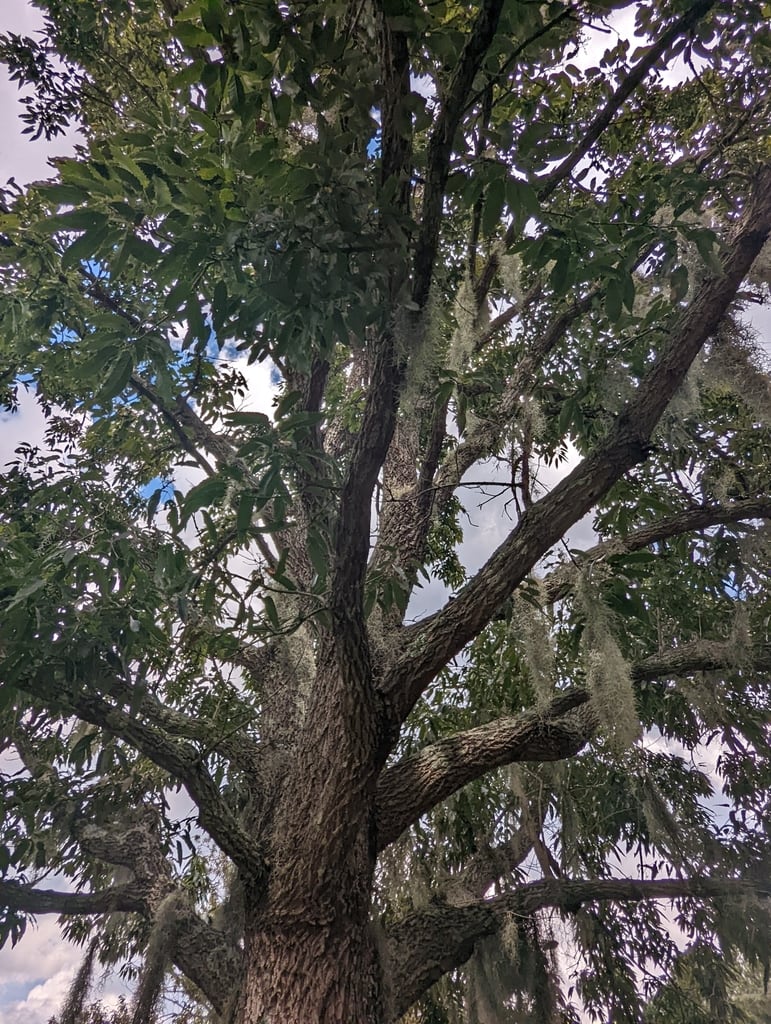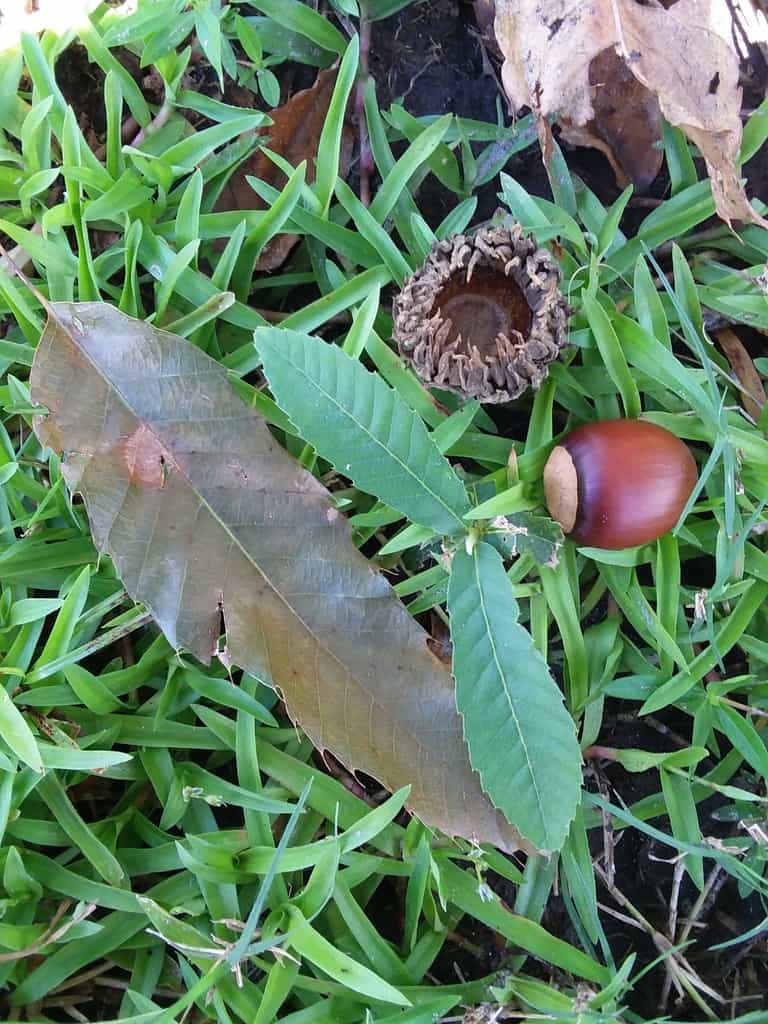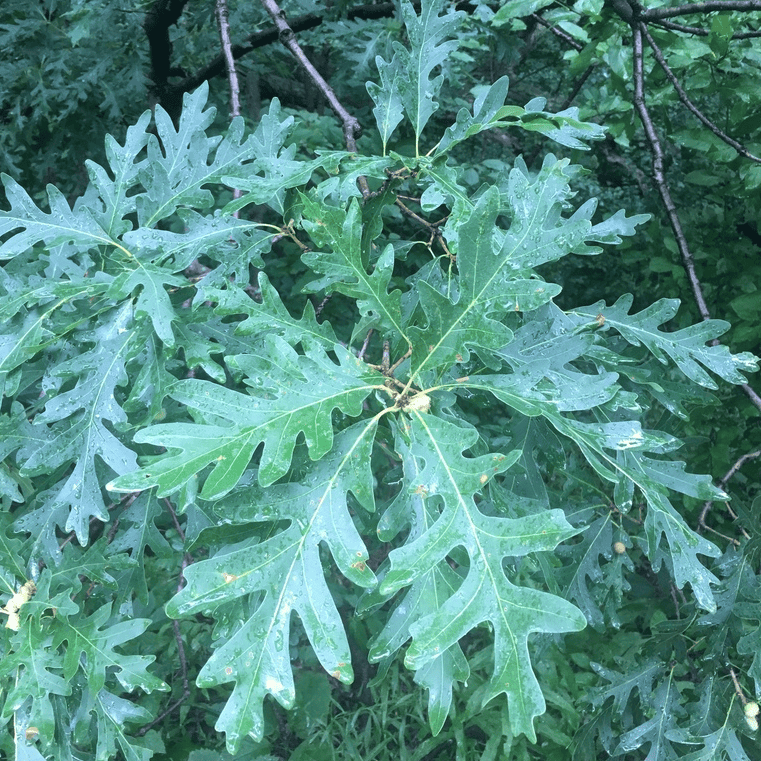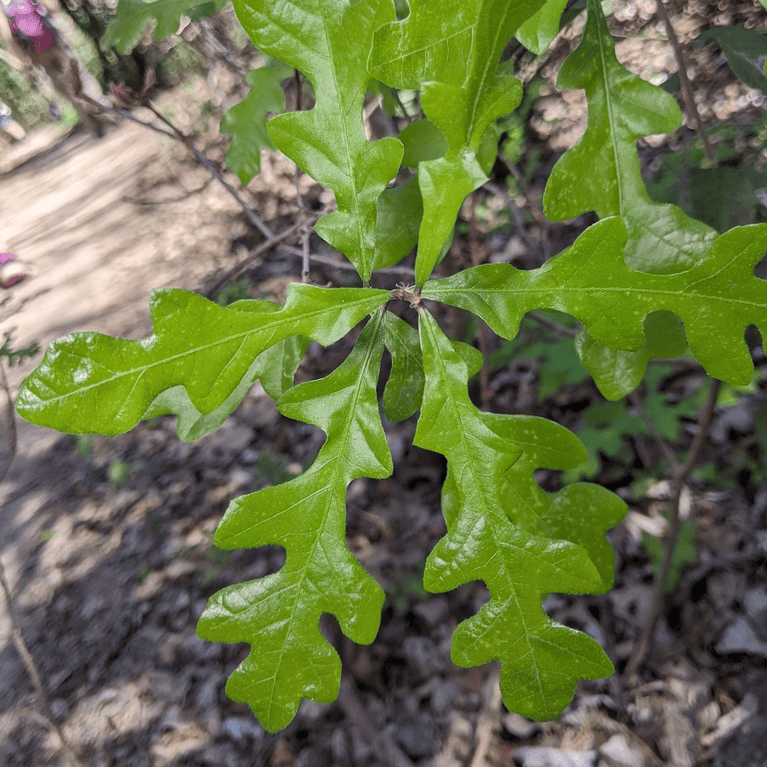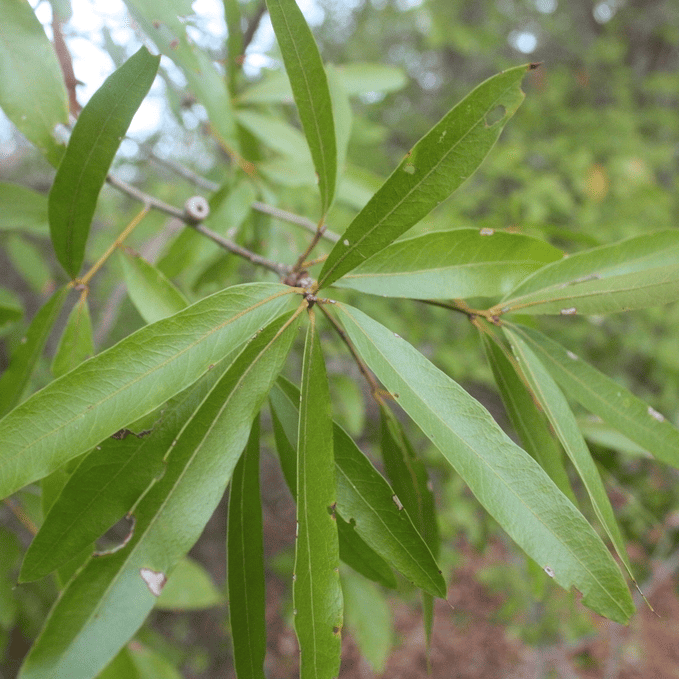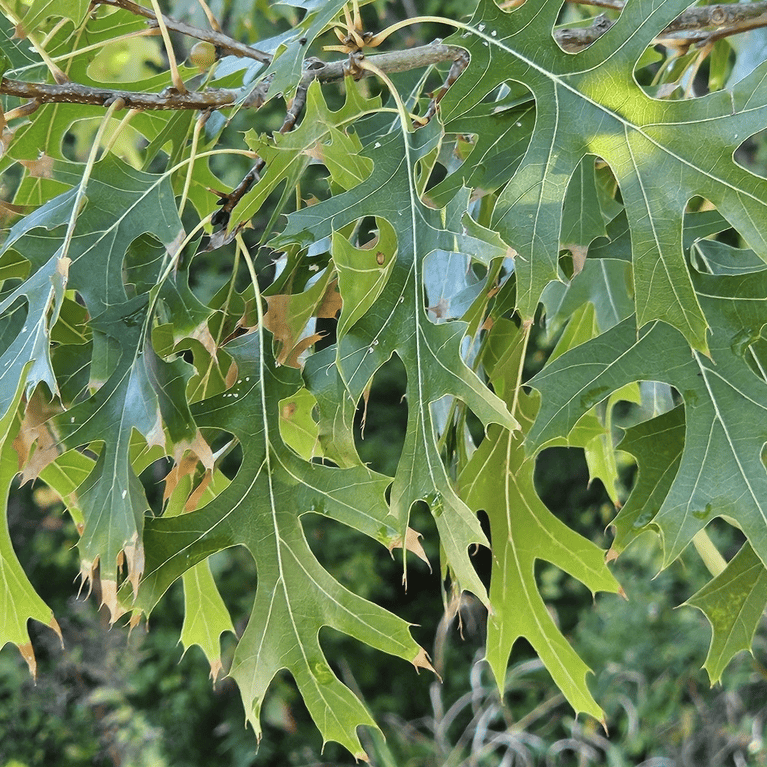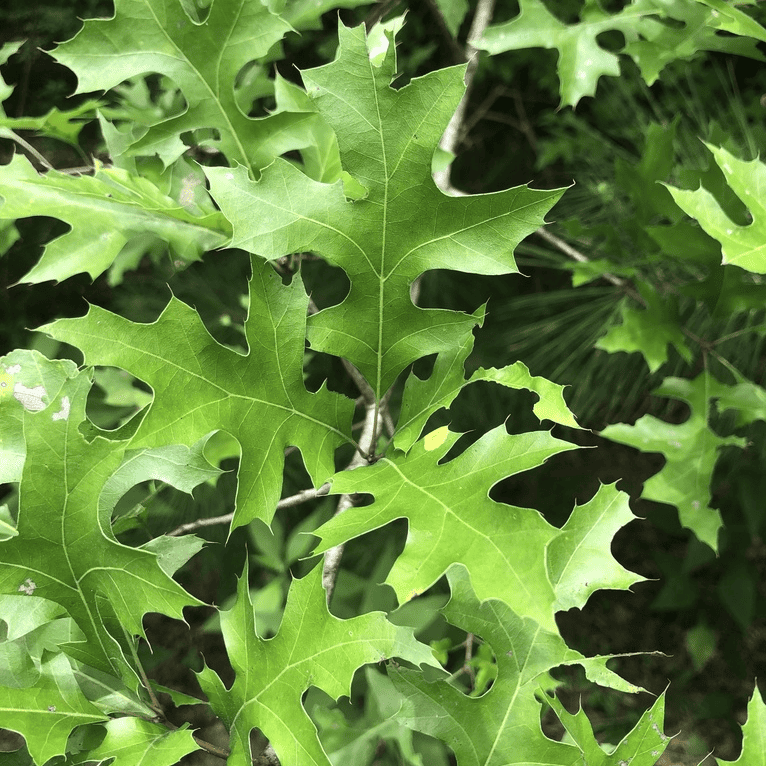Sawtooth Oak Quercus acutissima is a deciduous, medium size (65’ tall) tree native to Asia. It was introduced into the U.S. and planted both as an ornamental and for wildlife (mainly deer and turkey) because of its rapid growth and relatively early acorn production; trees 5 – 10 years old can bear acorns. The acorns, however, are too large for turkey, and deer prefer acorns of white oaks over those of red oaks, to which this species belongs. This species has several other drawbacks. A study from Sullivan and Young (1961) found that Sawtooth Oak acorns contained less protein, fat, and carbohydrates than the eight native oak species they tested. Unlike most native oaks, Sawtooth Oak drops its acorns in early fall; therefore, their acorns are unavailable in late Fall and Winter, when acorns are most valuable as a food source. This species also appears to be relatively short-lived and vulnerable to high winds unlike most native oaks. Sawtooth Oak is established in widely scattered locations across Louisiana. It is classified by the Louisiana Department of Wildlife and Fisheries as a Tier II invasive species defined as “currently causing moderately negative impacts on wildlife or natural communities in Louisiana”.
Like most oaks, this species is likely spread by squirrels and blue jays that transport and cache acorns by burying them in the ground, but don’t recover a substantial number that grow into new trees. In this way, Sawtooth Oak spreads from initial planting sites into nearby forestlands, potentially displacing native plant species. It is no longer recommended for planting in the U.S. because of its potential impact on native ecosystems. Sawtooth Oak, however, is still promoted and sold to support turkey and deer populations on hunting lands.
Landscape With These Native Plants Instead:

